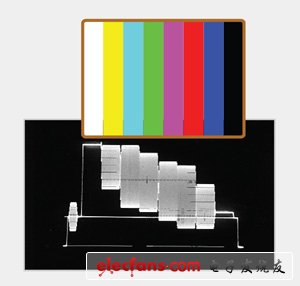Since the invention of television, video has been one of the most dynamic areas in the electronics industry. Following the advent of black and white TVs, color TVs, UHF channels, remote control TVs, cable TVs, increasingly high-definition TVs, flat-screen TVs, large-screen TVs, digital cable TVs, satellite TVs, and even today's handheld (mobile) video playback , Wave after wave of technological development continues to emerge. The technology behind these waves includes many aspects, such as advanced video compression, innovative display technologies such as plasma, liquid crystal, DLP and the latest organic light emitting diodes (OLED), conversion from analog to digital transmission, mobile tuners, home video Networking, IPTV set-top boxes, and upcoming TV / Internet integration and 3D display, etc. In a variety of video products and systems, component suppliers, especially IC suppliers, have their own specific areas of expertise. Therefore, when analyzing the development trend of video, the angle and details of the observer's point of view must be considered. For example, integrated circuit (IC) suppliers, such as Fairchild, who have been involved in video output technology, grasp the market and technology dynamics from the perspective of video output. Therefore, we consider the development trend of video from the aspect of video output to clearly explain the potential market and technology trends in video output.
The American TV series "Star Trek" has been popular since the era of black-and-white TV, and just like the video market itself, this show is constantly changing in many technological waves. The reason why "Star Trek" is mentioned here is because the show made the term "Prime DirecTIve" popular, which is very useful when discussing the history of video development. In order to fully understand the laws of video development, it should be noted that the highest guiding principle consistently ensures that all new technologies are backward compatible with all older generation technologies. Astonishing human capital (intellectual capital) and intellectual investment have been driving the advancement of video technology while making it backward compatible. For example, in order to be able to display on the previous generation black and white display screen, the color TV signal has become very complicated and delicate. Since then, the heavy burden of backward compatibility, the highest guiding principle, has also been a challenge for video technology and its market development.

Figure 1: Color TV video signal (showing color stripe pattern).
If you look at the video development history from the output, that is, from the back-panel, the evolution process is almost like the result of an unearthed cultural relic verified by an archaeologist. The backplane of a common set-top box (STB) integrates old and new technologies and almost everything in between. For example, it may include RF coaxial connectors, S-video, standard definition (SD) composite video (CVBS), high definition (HD) component video (Y, Pb, Pr), HDMI, audio left and right channels (audio R / L) , Ethernet, USB, eSATA, digital audio (optical transmission), IEEE 1394, etc. Each of these terminals represents a long history of technological development and adaptation to specific video products. Networking and storage technologies such as Ethernet, 1394, USB, and eSATA each have their own legends. However, in this article, we mainly focus on the traditional devices connected to the analog TV backplane: composite video, component video, and currently mature HDMI.
In an increasingly digital world, it is very interesting to imagine the future of analog output. Video equipment has not only become digital, but also developing in two different directions, smaller and larger. On one side is a compact handheld video device, on the other side is a large-screen video. This development requires higher definition and technology for storing higher definition video in small handheld devices, and also requires small handheld devices to output video signals for display on a larger screen. People expect to carry movies and other content from one place to other places. This demand promotes the development of video storage for handheld devices. It has quite a taste of the "sneaker net" concept used in the computer industry before the popularity of the Internet.

![]()
![]()
Figure 2: Video equipment is developing in both larger and smaller directions.
The amazing high-quality resolution that 1080p can provide has pushed the HDMI terminal to be used in almost every video device. The value of HDMI is that it can realize the transmission of the highest quality video signals between devices, and at the same time, it has built-in copyright protection functions, eliminating the worries of Hollywood people about the distribution of digital high-definition content. Although some people may regard HDMI as the ultimate in video interconnection, the highest guiding principle states that it must be compatible with older analog connectors. However, this principle has some loopholes. To save costs, some DVD and set-top box (STB) equipment manufacturers, especially some Chinese manufacturers, have begun to remove the S-video terminal because this connector has actually been eliminated because it is between composite video and component video "No man's land". S-video multi-pin connectors are more expensive than simple RCA plugs for composite video, but S-video terminals cannot provide component video performance in any way.

Figure 3: Typical video output connection scheme.
Modern Downlights,Mini Downlights,Smart Led Downlights,Led Ceiling Downlights
Changxing Fanya Lighting Co.,Ltd , https://www.fyledlights.com